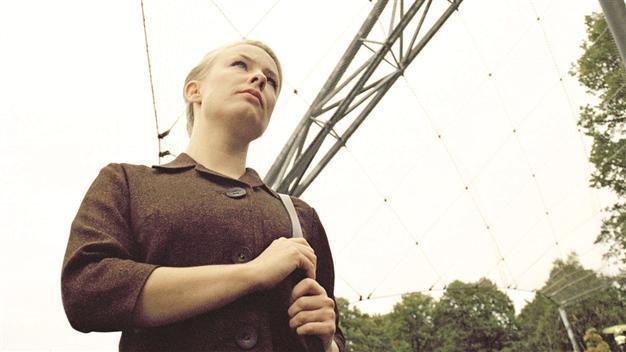Films focus on hardships women face in daily life
ISTANBUL

When writing the script for “Zoo” Tykkä is inspired to combine the two scenes of the zoo trip and the underwater rugby game.
Finnish artist and director Salla Tykkä’s work focuses on the issue of equality between men and women. She employs themes such as voyeurism, perfectionism, obsession and sexual identity in forms of visual narratives of daily life in her works. Dirimart Garibaldi will be exhibiting Tykkä’s latest work, “Zoo,” until May 8.
Female characters play significant roles in Tykkä’s works. Most of her video installations tell stories where the protagonist faces conflict, odd situations or unexpected encounters which affect the course of their lives. “They encounter difficult situations and this becomes a turning point in their lives,” she said.
“The films showcase a small episode of women’s lives when they experience something significant, which connects to what they see or they experience. The experience makes them see life differently,” Tykkä said.
“I think I use women [in my work] because I am a female,” she said. “I was using myself as an object and subject. Later on I did not feel necessary but I wanted to continue working with females,” Tykkä said.
Tykkä first got started in the art world through photography before moving onto film.
“To take a photograph is to participate in another person’s, or thing’s, mortality, vulnerability, mutability,” writer Susan Sontag once said. It is a truth which, having seen Tykkä’s “Zoo” seems to also be fully applicable to the medium of film.
“Zoo” is not just a film about how the photographic-filmic eye conditions perception and memory in our visual culture; it is also a film about the complex relationship between culture and nature.
The art piece follows a young female protagonist as she walks through a deserted zoo, peering at the animals in different enclosures and occasionally photographing them. The film subtly conveys a sense of independence, intelligence and a mounting state of anxiety.
The camera becomes like a second character in the way it follows the protagonist, circling her with a thrilling ease and increasing insistence. Its freedom of movement almost matches that of the eye itself, especially the character’s increasingly restless glances.
The installation represents a “camera” that looks at another camera, and through the eye of the lens we catch sight of images that associatively evoke memories of images already stored in our memory. The specific succession of psychological references and iconological associations are Tykkä’s attempt to stress that our consumption of photographic and filmic images radically conditions our perceptions.
The young woman in the film seems at first to be photographing the zoo animals but as the film unfolds, the perspective shifts and we get the impression that she is aware of being part of a larger photo or film where she herself is the prey being observed. In the course of the film, Tykkä succeeds in creating an atmosphere in which subject and object constantly seem to switch places in a kaleidoscope-style, whipping the tensions between both to fever pitch.
Underwater rugby and inequalityIn “Zoo,” the camera also captures scenes of an underwater rugby game, which forms a significant symbol for Tykkä. The sport is used to intersperse episodes of climactic and frightening violence into the film.
“There is certain tension and scariness [in underwater rugby]. I knew this game for a long time. This is a hard game [to play]. You have to hold your breath [for awhile]. The way I see it, men and women play together and this is something like battle, in which they have to struggle,” Tykkä said.
Tykkä had always wanted to use underwater rugby in her work. “It is visually interesting and there is allegory in it,” she said. “There is a kind of different place [in the game] where men and women are more equal. You have less of an advantage because of your build in terms of physical strength.”
When writing the script for “Zoo” Tykkä was inspired to combine the two scenes of the zoo trip and the underwater rugby game. “That’s how the structure was born,” she said. The underwater rugby was a subconscious choice.
According to Tykkä, she made a film in which audiences can enter quite easily. “As a viewer you can enter the story,” she said.
The end of the film leaves the viewer with unanswered questions. The protagonist appears to die. “But you cannot be certain of this. Everything might be a dream,” Tykkä said.
Hatice Utkan contributed to this article
